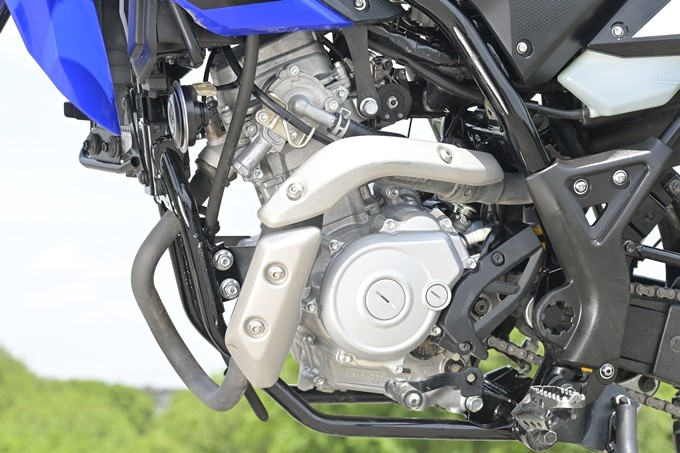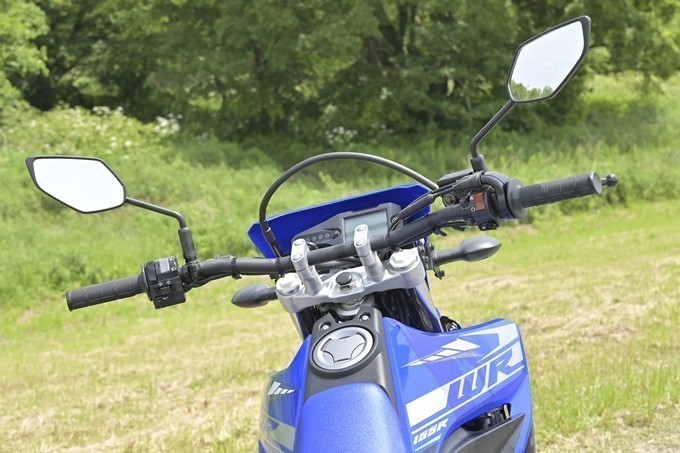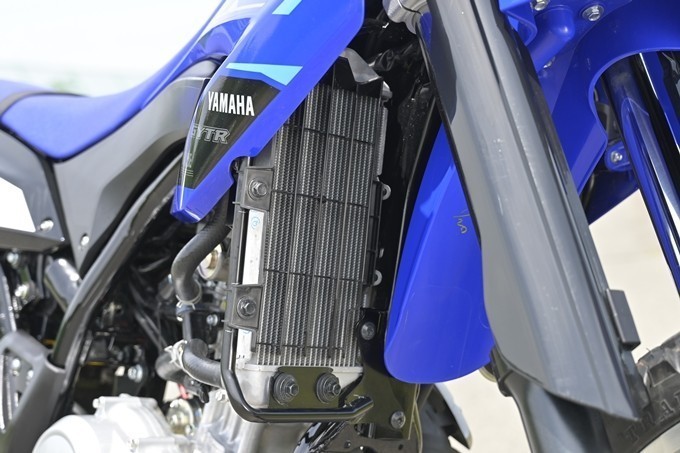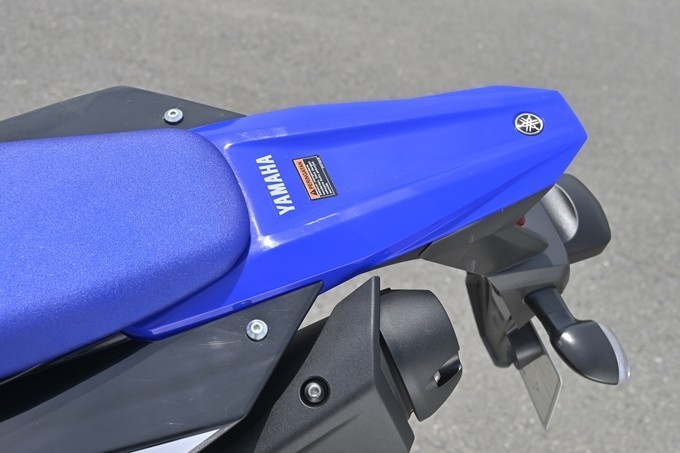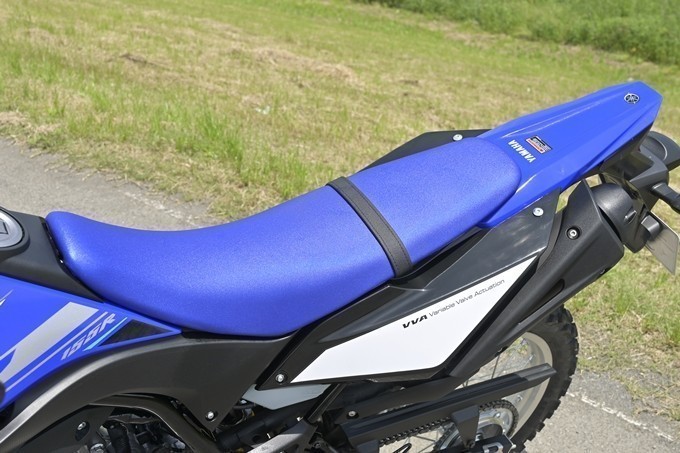*Photo by: Atsushi Sekino
[YAMAHA Indonesia WR155R] Details and Test Ride Review
The WR155R is imported from YAMAHA Indonesia and sold by SOX, a motorcycle dealership that handles from Japanese to foreign and used motorcycles. This machine has an engine displacement that is a younger brother of the WR250R, which was previously lined up as a Japanese model, but it is equipped with a high mechanism called VVA (Variable Valve Actuation) that switches the camshaft profile according to the number of revolutions.
Here is the review about WR155R riding quality from a former editor-in-chief of a motorcycle magazine for beginners, Hiroaki Yatagai.
21-inch front full-size authentic vehicle

 |
 |
 |
 |
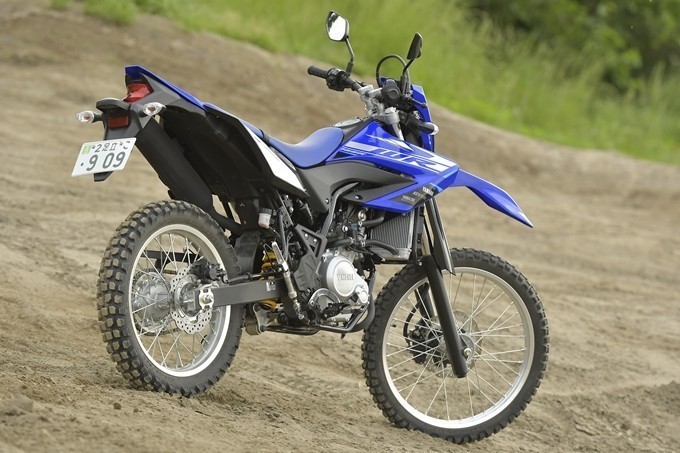
[Overall Length x Overall Width x Overall Height] 2,145mm x 840mm x 1,200mm
[Curb Weight] 134kg
[Wheel Distance] 1430mm
[Minimum Ground Clearance] 245mm
The 21-inch front large-diameter wheels, which are the proof of a full-scale off-road model, have a minimum ground clearance of 245mm, and a slim chassis that takes advantage of the compact size of the engine shows the high off-road capability it deserves. The appearance is as easy as 125 class, which is a little smaller than 250cc, and it seems to be easy to get along with.
[Selling Price]
Blue / Black: around 3400 USD (JP)
Slim and light motorcycle position

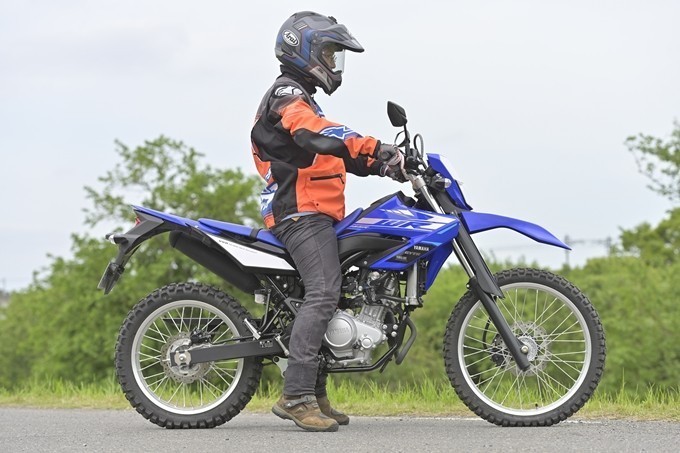 |
 |
[Seat Height] 880mm
Off-road motorcycle seats are inevitably high to ensure a large ground clearance. The seat height of 880mm is STD among the numbered off-road models, but for my height of 172cm and physique 75kg, it's only enough to lift the heels of both feet by 6 or 7cm. The motorcycle looks unsteady, but thanks to its compact and light build, it's easy to balance. The foot grounding of an off-road motorcycle is a matter of familiarity. Even if it get a little twitchy or scratched, it is an off-road motorcycle that don't break down in a fatal way.
WR155R usable in a wide range from low to high revs - Actual Review
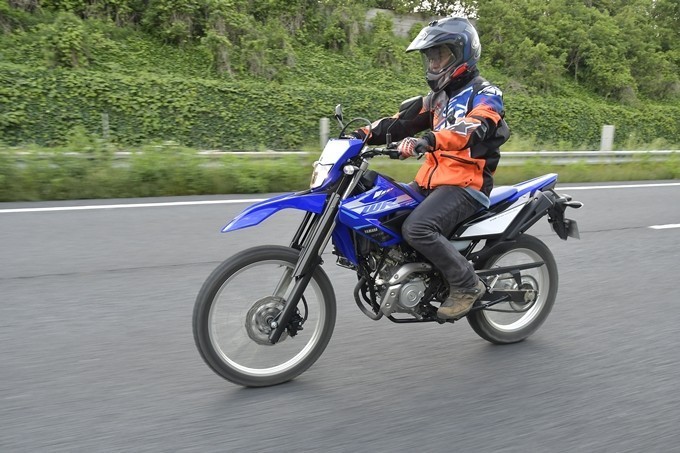
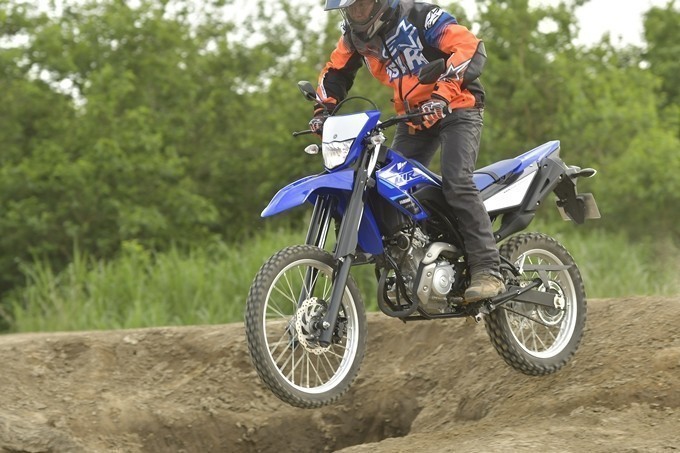 |
 |
Stress-free from low to high speeds
The WR155R is compact and comfortable to ride, even if it is said to be 125cc. What surprised me when I straddled was the slimness and lightness of the chassis. It's so well put together and sized like a 125cc motorcycle that I had to double check the engine displacement. Once start riding, you can't help but be impressed by the powerful engine that delivers a decent amount of power from low speeds and low revs. Speaking of YAMAHA's off-road motorcycle, the SEROW series immediately comes to mind, but the abundant low-speed torque reminiscent of the SEROW makes it difficult to stall. In fact, I feel that I was quite conscious of the SEROW in terms of ride quality, or that there are many parts that are similar to the SEROW. With this low speed torque, new riders should be able to handle it easily.
However, these 150cc machines with a low speed torque character often have a lack of power in the high-speed range. This is especially true on the highways, but how about the WR155R doing? It is a liquid-cooled engine, but it is only 155cc. With this low-speed torque type engine, it would be a good idea if 90km/h could be achieved. I was a little disappointed and headed for the highway, but I was surprised. I was amazed at how easy it was to cruise at 100km/h. It could even reach 120km/h depending on the situation. Regarding the motorcyle's maneuverability, it feels like an off-road motorcycle that's on the edge of its upper limit at this speed range, but this high-revving feel is even better than the 155cc engine displacement.
Is this the effect of VVA or Variable Valve Actuation? I couldn't help but grin in my helmet. Normally, the characteristics of the engine are the high-speed type that emphasizes peak power and the mid-low speed type that emphasizes low-speed torque, and the character is created at the design stage. However, the amount of air being pumped into the cylinders and the timing of the exhaust gas discharge determines whether peak power or low speed torque is more important, making it difficult to reconcile these 2 characteristics. YAMAHA has long used an exhaust pipe with a valve to control the flow of exhaust gas, and this is another way to achieve both low rev torque and high rev extension.
So why not just switch the amount of air-fuel mixed into the cylinders and the timing of the exhaust gas discharge between low and high rev range? It was this VVA and other variable valve system devices that were born. HONDA's CB400SF has VTEC, a mechanism that deactivates one of the 2 intake and exhaust valves in the low rev range, but the VVA on the WR155R switches the character of the camshaft that pushes the valves around.
This VVA can actually be experienced. On the highway, keep the accelerator opening constant and try riding so that the speed gradually increases with wrinkles. When the number of revolutions exceeds 7,000, I feel that the acceleration improves slightly in a quadratic curve. Variable mechanism is not always easy to feel on larger displacements, but on larger displacements, this effect may be more noticeable.
Sufficient off-road ability!
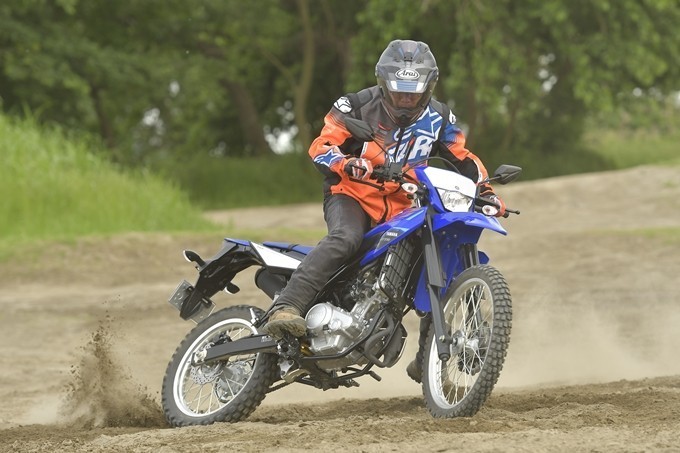 |
 |
The ample low speed torque from the VVA is also useful off-road. When you want to lift the front tire a bit to get over the bumps in particular. When you want to get your foot on the gas pedal and go slow in a difficult spot. For off-road, you'll be riding more in an extremely low-speed range than in the high-speed range, and the way the power comes out is really just right. On a 4-stroke 125cc off-road motorcycle, the power is inevitably lacking, and there are many times when you can't even raise the front tire to lift it. The WR155R, on the other hand, allows you to lift the front tire with a simple combination of light body action and accelerator work.
The WR155R looks very well built. I got carried away by the engine with a good pickup and went up to the front, played like a steerage case on the bumps, and jumped down from the bumps, but even when riding with such a high load on the motorcycle, it does not uproot itself unexpectedly. It doesn't use up all of the suspension stroke and keep it stand firm. I tried jumping and landing from the front or steerer case to get a stronger front tire, I tried some pretty nasty tricks, but it's still impressive how the fork doesn't use up all of its stroke.
An off-road motorcycle is not fun to ride, as it's hard to control if its performance or engine power is too much. The balance between the chassis and engine is very important. The weight is getting heavier in a trend in recent years, and it's rare to see a motorcycle with such a good balance between engine and chassis. There are plenty of off-road motorcycles that can handle woodland riding, but the WR155R is a great example that can teach you how to do more than just riding in the woods, but also how to master the tailslide, front up, and other 3-dimensional movements that only an off-road motorcycle can perform.
Meter & Lights
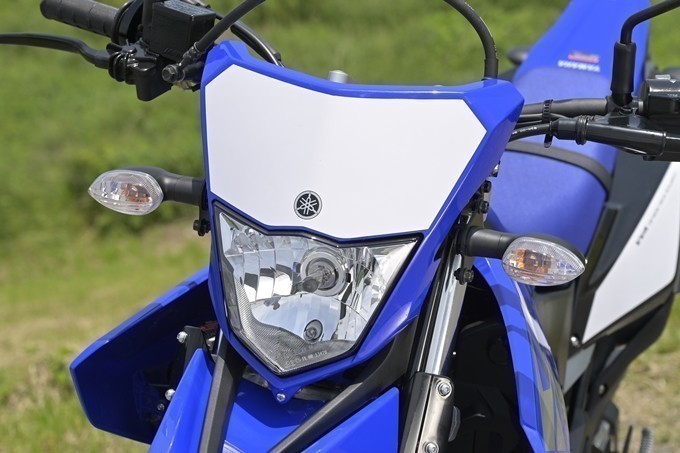 |
 |
 |
 |
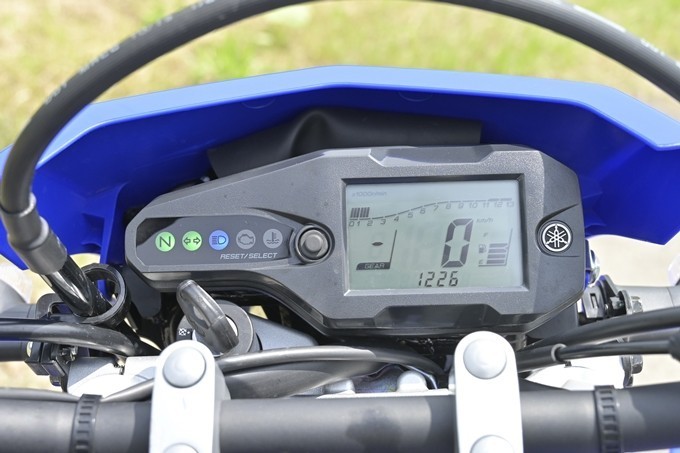
[Meter Display Data]
Speed, engine rev range, fuel level, clock, odometer, trip meter, gear position, average fuel consumption, instantaneous fuel consumption
The light sources for the headlights and blinkers are light bulb instead of LEDs, and the blinkers appear to be the same as on the WR250R. The fact the YAMAHA has been able to produce such a small face in the headlight design, which tends to be large nowadays, is truly a YAMAHA design.
Riding Performance
[Engine type / displacement] Liquid-cooled 4-stroke OHC 4-valve single cylinder / 155cc
[Maximum Output] 12.3kW / 10,000rpm
[Maximum Torque] 14.3Nm / 6,500rpm
This may be due to the use of exhaust pipe which lengthened with the equipped VVA and exhaust pipes. While maximum torque is delivered at the low revs of 6,500rpm, maximum output is delivered at 10,000rpm, which has a wide range of revolutions. The engine specs that can rotate firmly from low to high revs are clearly shown in the specifications. Even when I actually ride it, the engine has plenty of power at low speeds and is easy to handle even at high speeds on the highway. It is rare to find an engine of this displacement with such a wide range of power.
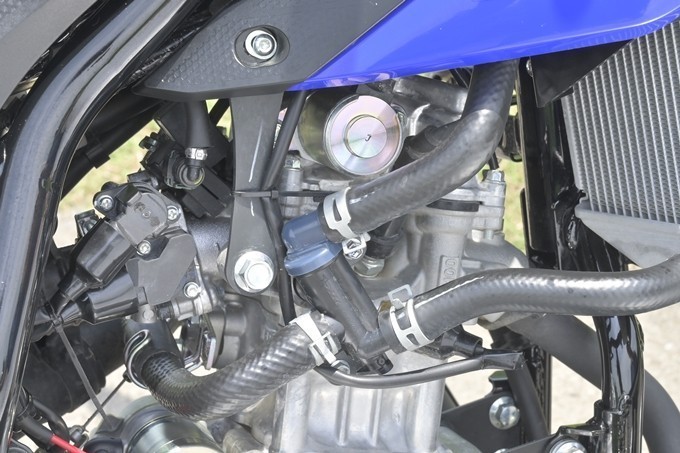
VVA (Variable Valve Actuation)
The VVA mechanism allows for a wide range of applications. The camshaft profile (camshaft ridge) of the camshaft determines the opening and closing of the intake valves that feed the air mixture into the engine. Normally, there is only one egg-shaped camshaft profile per engine, but with the VVA, the profile switches between high and low rev at 7,000rpm. This changes the amount of time the valves open and the amount of lift, giving the engine a nice mix of both the low-revving with full torque and the high-revving with good elongation. In effect, the camshaft slides sideways at 7,000rpm mark, switching the camshaft ridge, and when the engine speed is increased, a clicking sound can be heard from the cylinder head.
-
Handlebar

The handlebar is 840mm wide to make it easier to hold down a swinging tire. The handlebar is supple, low-vibration steel, probably for comfort. The handlebar diameter is 22.2mm, not tapered.
Undercarriage
[Tire size] Front: 2.75-21 / Rear: 4.10-18
 |
 |
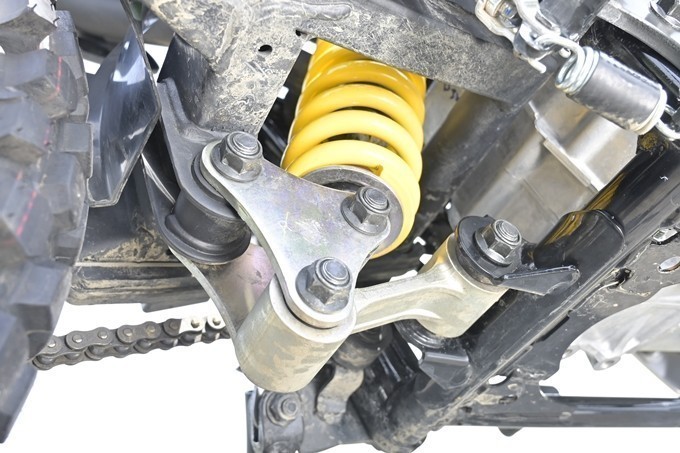 |
 |
The front fork is upright with a 41mm inner tube diameter. The slender fork contributes to the compact feel of the motorcycle handling. The rear shock is a link-type with adjustable preload. Suspension stroke levels for both front and rear have not yet been announced.
- Brakes
 |
 |
[Front Brake] NISSIN one-sided push 2 POT / φ240mm disc
[Rear Brake] NISSIN one-sided push 2 POT / φ220mm disc
Although both front and rear solid type discs, it has a wave-like shape with high heat dissipation. The current model is not equipped with ABS, but it can be selected without it only on models built before October 1, 2021, when continuous production becomes mandatory.
-
Radiator

The radiator for liquid cooling is only located on the right side of the motorcycle. A guard pipe is included to prevent damage due to falling over, which is a key feature for off-road riding.
- Swingarm
 |
 |
The swingarm is a square steel pipe but this specification is sufficient for this class. The sprocket profile is 14-T front and 51-T rear. There are also no chain guides, which is unusual for an off-road motorcycle. The tires are IRC GP-21/22 tires and the chain is a 428 seal type.
- Exhaust System
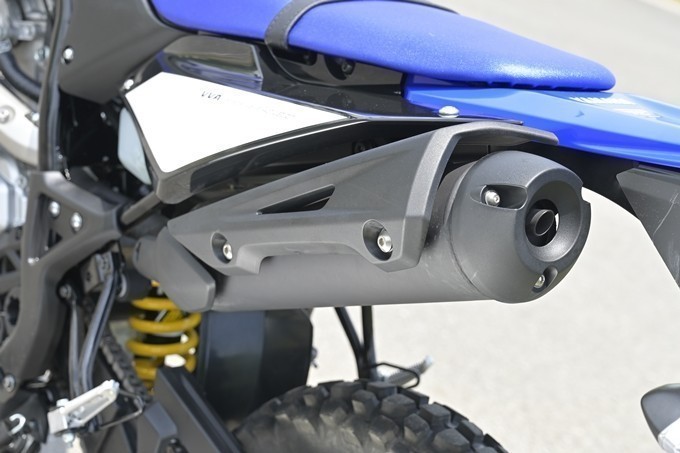
Perhaps it was to avoid waterlines and VVA, or perhaps it was better to have a left-handed silencer to increase the length of the pipe, but the left-handed silencer is rare for Japanese manufacturers. YAMAHA's specialty exhaust pulsation control device, EXUP, is not equipped.
In addition to the serrated footpegs that hold the boots firmly in place, the footpegs are made of steel to prevent it from bending in the event of a fall. The retractable 6-speed change pedal is one of the best off-road features.
Utility
[Fuel Capacity] 8.1L
The fuel tank has a large capacity of 8.1 liters, and regular gasoline is used for fuel. The fuel consumption of 46.6km/liter is measured by the SOX staff, which means it is a long-range model that can ride over 350km on one tank. This figure is an exceptional range for an off-road motorcycle.
- Fender
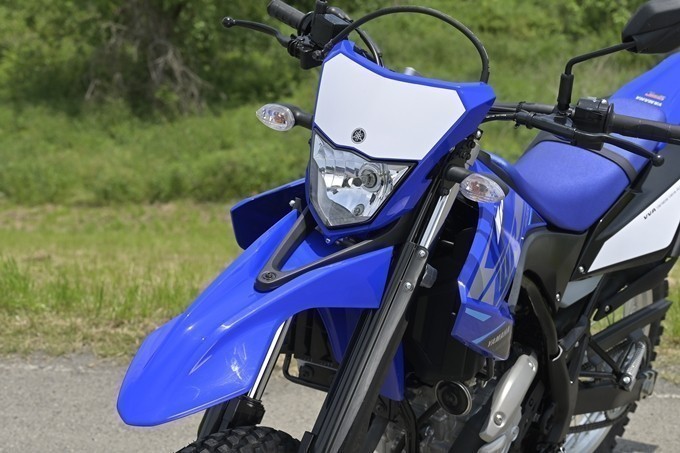
The motorcycle is styled in a sleek, WR type style, which is typical of enduro machines. The black parts on the fender look like they are used to hold the fender in place.
-
Around the tail

Unfortunately, I don't see any loading hooks or other equipment for loading. It seems that a carrier is necessary for loading cargo. There is a page for accessories on the YAMAHA website, and a carrier may be available, but it seems that it is still in preparation.
-
Seats

The 880mm seat is set much lower in the saddle, probably for better foot grounding. If you want to improve off-road control, you might want to raise the seat a bit more and set the load input point higher.
-
Left space


On the other side of the radiator, in the left shroud, there is a key lockable cover on the inside of the shroud, and when I removed it, I found that the battery was inside. The tools are stored next to the battery.
[Left Switch] Headlight switching & passing, blinker, horn, hazard
[Right Switch] Starter switch / Kill switch
The switch box has a simple design. In addition to basic features such as the bushing-canceling blinkers, it also has a hazard and passing switch.
Summary

The balance as an entry machine is good!
It's a little confusing, but let's talk about the original name of the WR, which stands for "Wide Ratio". The name originated from the fact that the YZ series of motocrossers, which were designed for acceleration-oriented cross-transmissions, were given a wider gear ratio to make them more versatile enduro-style machines. The idea behind the WR155R is the same. With VVA, the WR155R engine is designed to be more of a wide "range" rather than a wide "ratio" even it's WR. With this versatile machine, it's not only convenient as a daily commuter, but it can also do more work at high speeds than its displacement.
Moreover, you can also enjoy off-road riding perfectly. The WR155R is an all-rounder that can do everything with one machine. Furthermore, the WR155R is light and easy to handle, as you would expect from an off-road motorcycle, so if you don't mind about the foot grounding, it has plenty of charms as a first motorcycle.
See YAMAHA Moto Index Page
See Accessories for YAMAHA WR155R



